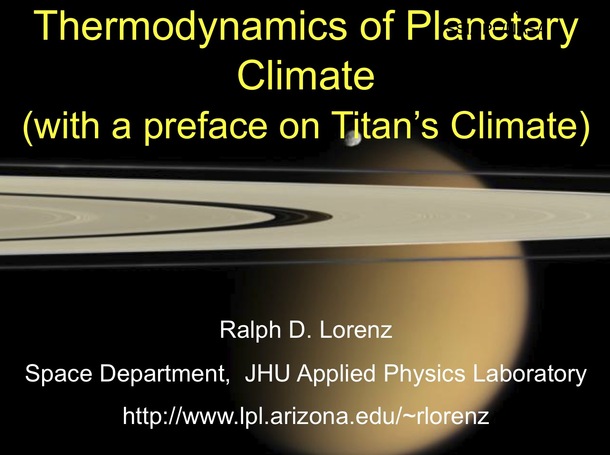Bridging the gap > Ralph Lorenz

If initial loading stalls, switch to the Flash version.
Thermodynamics of
planetary climate
Ralph Lorenz
JHU Applied Physics Laboratory, USA
Help



Abstract: Atmospheres are heat engines. Every raindrop that falls was first hoisted aloft subject to the laws of thermodynamics, which provide some insight into the potential vigour of a planetary climate. The generation of available potential energy − and thus the mechanical work and how this work is then dissipated − controls how interesting an atmosphere may be. Some examples will be discussed. The concept of habitability as a global property also merits some discussion. Even if the average surface temperature of a world permits liquid water, the presence of large horizontal temperature gradients may make large areas uninhabitable, and can sequester volatiles in the colder regions, dessicating the body as a whole. In this connection, it is useful to estimate the horizontal temperature gradients on a body. The flows in oceans and atmospheres may conspire − if dynamically permitted to do so − to maximize the entropy production by their heat transport. This notion will be presented and cautions on the application of this principle will be discussed.
Additional materials: PDF of slides
ExoClimes 2010, Exeter, Friday 10th Sep 2010
Additional materials: PDF of slides
ExoClimes 2010, Exeter, Friday 10th Sep 2010
